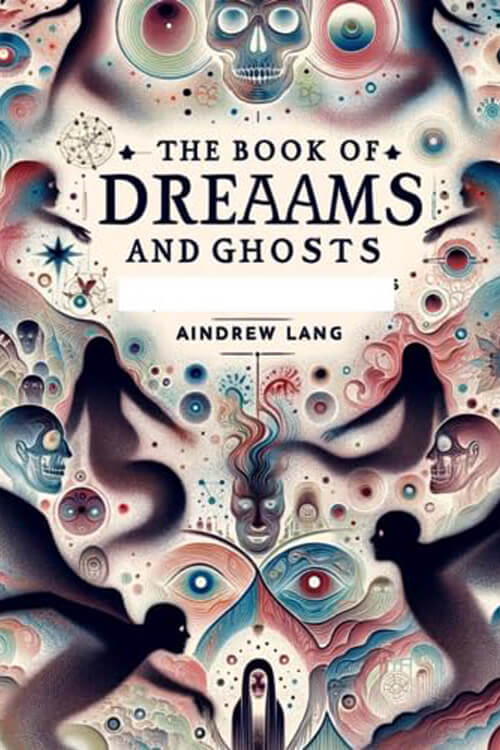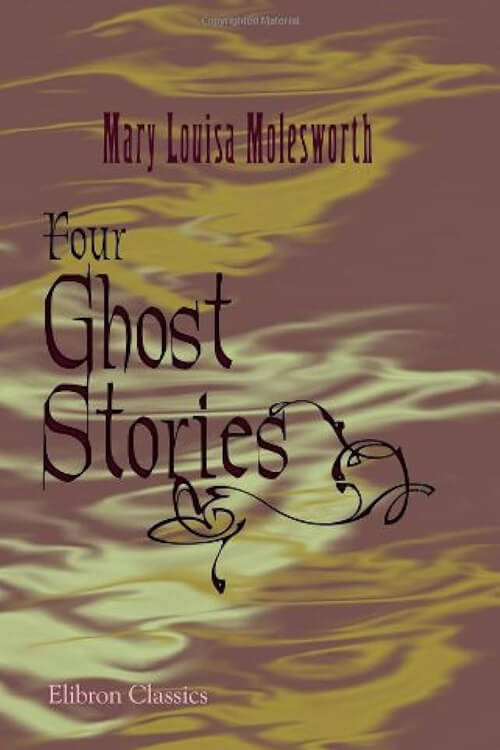
The Book of Dreams and Ghosts
Miss C., a lady of excellent sense, religious but not bigoted, lived before her marriage in the house of her uncle D., a celebrated physician and member of the Institute. Her mother, at this time, was seriously ill in the country. One night, the girl dreamed that she saw her mother, pale and dying, and exceedingly grieved at the absence of two of her children: one a curé in Spain, the other—herself—in Paris. Next, she heard her Christian name, “Charlotte!” and, in her dream, saw the people about her mother bringing her little niece and godchild, Charlotte, from the next room. The patient intimated by a sign that she did not want this Charlotte but her daughter in Paris. She displayed the most profound regret; her countenance changed, she fell back, and died. The next day, Mademoiselle C.’s melancholy attracted her uncle’s attention. She told him her dream; he pressed her to his heart and admitted that her mother was dead. Some months later, Mademoiselle C., when her uncle was absent, arranged his papers, which he did not like anyone to touch.
Among these was a letter containing the story of her mother’s death, with all the details of her dream, which D. had kept concealed lest they should impress her too painfully. Boismont is staggered by this circumstance and inclined to account for it by “still unknown relations in the moral and physical world.” The most commonly known of dreams before, or simultaneous with a historical occurrence represented in the vision, is Mr. Williams’s dream of the murder of Mr. Perceval in the lobby of the House of Commons on May 11, 1812. In Cornwall, Mr Williams, of Scorrier House, near Redruth, lived till 1841. He was interested in mines and a man of substance. Unluckily, the versions of his dream are full of discrepancies. It was first published, apparently, in The Times during the “silly season” of 1828 (August 28). According to The Times, whose account is very minute, Mr. Williams dreamed of the murder thrice before 2 a.m. on the night of May 11. He told Mrs Williams that he was so disturbed that he rose and dressed at two in the morning. He went to Falmouth the next day (May 12) and told the tale to everyone he knew.
Read or download Book
Andrew Lang
Andrew Lang FBA (31 March 1844 – 20 July 1912) was a Scottish poet, novelist, literary critic, and contributor to anthropology.
Biography.
He is best known as a collector of folk and fairy tales. The Andrew Lang lectures at the University of St Andrews are named after him Lang was born in 1844 in Selkirk, Scottish Borders. He was the eldest of the eight children born to John Lang, the town clerk of Selkirk, and his wife Jane Plenderleath Sellar, who was the daughter of Patrick Sellar, factor to the first Duke of Sutherland. On 17 April 1875, he married Leonora Blanche Alleyne, the youngest daughter of C. T. Alleyne of Clifton and Barbados. She was (or should have been) variously credited as the author, collaborator, or translator of Lang’s Color/Rainbow Fairy Books, which he edited. He was educated at Selkirk Grammar School, Loretto School, and the Edinburgh Academy, as well as the University of St Andrews and Balliol College, Oxford, where he took a first class in the final classical schools in 1868, becoming a fellow and subsequently honorary fellow of Merton College. He soon made a reputation as one of the most able and versatile writers of the day as a journalist, poet, critic, and historian. He was a member of the Order of the White Rose, a Neo-Jacobite society that attracted many writers and artists in the 1890s and 1900s. In 1906, he was elected FBA.
He died of angina pectoris on 20 July 1912 at the Tor-na-Coille Hotel in Banchory, Banchory, survived by his wife. He was buried in the cathedral precincts at St Andrews, where a monument can be visited in the southeast corner of the 19th-century section. Lang’s writings on Scottish history are characterized by a scholarly care for detail, a piquant literary style, and a gift for disentangling complicated questions. The Mystery of Mary Stuart (1901) was a consideration of the fresh light thrown on Mary, Queen of Scots, by the Lennox manuscripts in the University Library, Cambridge, approving of her and criticizing her accusers. He also wrote monographs on The Portraits and Jewels of Mary Stuart (1906) and James VI and the Gowrie Mystery (1902).
The somewhat unfavorable view of John Knox presented in his book John Knox and the Reformation (1905) aroused considerable controversy. He gave new information about the continental career of the Young Pretender in Pickle the Spy (1897), an account of Alastair Ruadh MacDonnell, whom he identified with Pickle, a notorious Hanoverian spy. This was followed by The Companions of Pickle (1898) and a monograph on Prince Charles Edward (1900). 1900, he began a History of Scotland from the Roman Occupation (1900). The Valet’s Tragedy (1903), which takes its title from an essay on Dumas’s Man in the Iron Mask, collects twelve papers on historical mysteries, and A Monk of Fife (1896) is a fictitious narrative purporting to be written by a young Scot in France in 1429–1431






